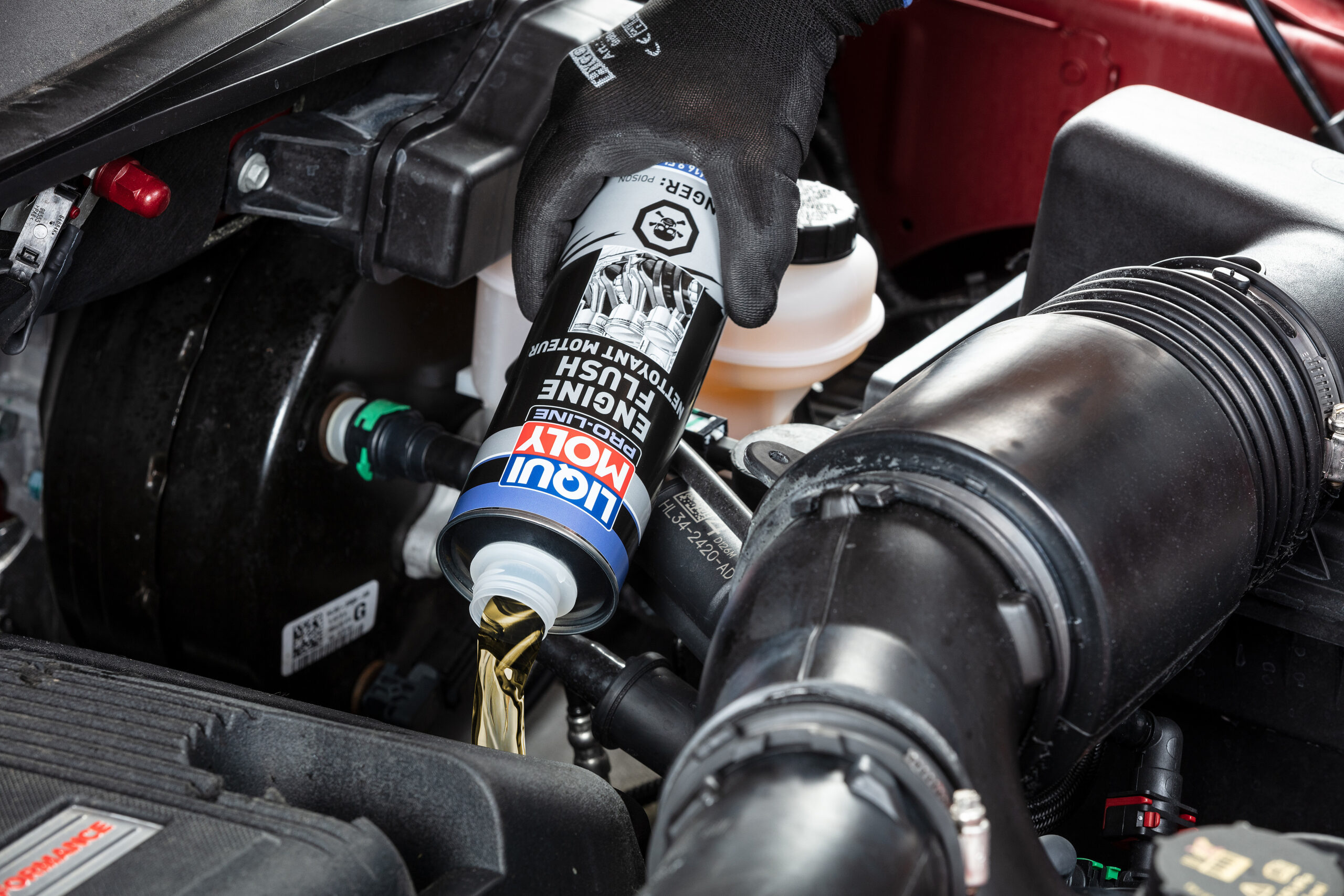It is the standard service for workshops: the oil change. On the one hand, it is important to attract customers. On the other, it is unpopular because it is a low-margin, interchangeable service that everyone offers.
With little effort, this standard service can be turned into a special offering that not only earns good money, but also improves customer loyalty. It’s what oil and additive specialist LIQUI MOLY, developer of the service, calls a “performance oil change.” It consists of three simple steps:
- Engine Flush
First, add an engine flush additive—like Engine Flush from LIQUI MOLY—to the old motor oil immediately before the oil change. The additive contains cleaning agents that dissolve deposits and sludge, optimizing oil consumption, improving oil pressure and ensuring proper oil flow.
The engine is then left running for 10-15 minutes. All of the dirt that has accumulated over many thousands of miles is then drained together with the used oil. The fresh oil is filled into a clean engine, where it can meet its full performance.
-
When it’s time to add new oil, don’t pick just any oil. Today, motor oil is like a fluid spare part that needs to fit precisely to the engine. Using the wrong oil is like installing the wrong replacement part.
The consequences range from increased wear and tear to major engine damage. Such an embarrassing mistake should not happen at any workshop. To ensure you’re selecting the proper oil, use an online guide that allows you to enter the make, model and engine to receive a list of suitable oils. Better safe than sorry!
- Adding Wear Protection
The final step of the performance oil change is to add a wear protection additive to the fresh motor oil. A wear protection additive, like Cera Tec from LIQUI MOLY, protects the engine by reducing friction in the motor. Less friction means less wear, fewer repairs and a longer service life, and allows the engine to put more power on the road while consuming less fuel.
Cera Tec is able to ensure that protection through two properties. Chemically, Cera Tec provides protection through so-called friction modifiers, which smooth the metal surfaces in the engine to compensate for microscopically small unevenness. Additionally, Cera Tec contains tiny ceramic particles which are protectively deposited on metal surfaces and reduce direct metal-to-metal contact. Both technologies reduce friction in the motor and, in addition to the wear protection provided, improve emergency running properties so that the engine is protected for a while, even in the event of oil loss.
Follow those three simple steps, and you’ll turn an ordinary standard service into a special treatment, generating additional high-margin turnover and allow your workshop to stand out from competitors.
About This Sponsored Content
With around 4,000 items, LIQUI MOLY offers a global, uniquely broad range of automotive chemicals: Motor oils and additives, greases and pastes, sprays and car care, glues and sealants
